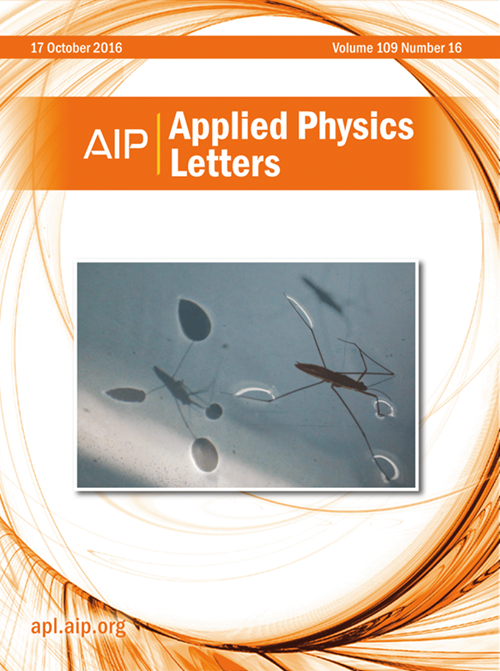Phase selection and texturing in molybdenum oxide films grown by reactive magnetron sputtering
IF 3.5
2区 物理与天体物理
Q2 PHYSICS, APPLIED
引用次数: 0
Abstract
Molybdenum oxide films offer a rich variety of properties for diverse applications, but exclusive synthesis of desired phases is a major challenge. Here, we demonstrate that oxygen flow ratio fO2 = [O2]/[Ar + O2] is crucial not only for phase selection of non-layered monoclinic MoO2 and layered orthorhombic α-MoO3 but also for controlling grain size and preferred orientation. Both mica and sapphire support exclusive MoO2 formation for 0.15 ≤ fO2 ≤ 0.25 at deposition temperatures Tdep = 400 and 500 °C, while α-MoO3 forms only at Tdep = 400 °C for 0.35 ≤ fO2 ≤ 0.5. Within the fO2 windows favoring each phase, high fO2 fosters large grains with out-of-plane 0k0 texture, except for MoO2 on c-sapphire at Tdep = 500 °C, where no fO2-texture correlation is discernible. These findings provide a framework for rational synthesis of single-phase monoclinic MoO2 and orthorhombic MoO3 with control over texture and microstructure to access desired properties.反应磁控溅射制备氧化钼薄膜的相选择和织构
钼氧化物薄膜为不同的应用提供了丰富多样的性能,但所需相的独家合成是一个主要挑战。在这里,我们证明了氧流比fO2 = [O2]/[Ar + O2]不仅对非层状单斜MoO2和层状正交α-MoO3的相选择至关重要,而且对晶粒尺寸和择优取向的控制也至关重要。云母和蓝宝石在沉积温度Tdep = 400和500℃时均支持0.15≤fO2≤0.25的MoO2形成,而α-MoO3仅在沉积温度Tdep = 400℃时形成,沉积温度为0.35≤fO2≤0.5。在有利于各相的fO2窗口内,高fO2培养出具有面外0k0织构的大晶粒,除了tdeep = 500°C时C -蓝宝石上的MoO2,在那里没有fO2织构相关性。这些发现为合理合成单相单斜MoO2和正交MoO3提供了一个框架,通过控制织构和微观结构来获得所需的性能。
本文章由计算机程序翻译,如有差异,请以英文原文为准。
求助全文
约1分钟内获得全文
求助全文
来源期刊

Applied Physics Letters
物理-物理:应用
CiteScore
6.40
自引率
10.00%
发文量
1821
审稿时长
1.6 months
期刊介绍:
Applied Physics Letters (APL) features concise, up-to-date reports on significant new findings in applied physics. Emphasizing rapid dissemination of key data and new physical insights, APL offers prompt publication of new experimental and theoretical papers reporting applications of physics phenomena to all branches of science, engineering, and modern technology.
In addition to regular articles, the journal also publishes invited Fast Track, Perspectives, and in-depth Editorials which report on cutting-edge areas in applied physics.
APL Perspectives are forward-looking invited letters which highlight recent developments or discoveries. Emphasis is placed on very recent developments, potentially disruptive technologies, open questions and possible solutions. They also include a mini-roadmap detailing where the community should direct efforts in order for the phenomena to be viable for application and the challenges associated with meeting that performance threshold. Perspectives are characterized by personal viewpoints and opinions of recognized experts in the field.
Fast Track articles are invited original research articles that report results that are particularly novel and important or provide a significant advancement in an emerging field. Because of the urgency and scientific importance of the work, the peer review process is accelerated. If, during the review process, it becomes apparent that the paper does not meet the Fast Track criterion, it is returned to a normal track.
 求助内容:
求助内容: 应助结果提醒方式:
应助结果提醒方式:


